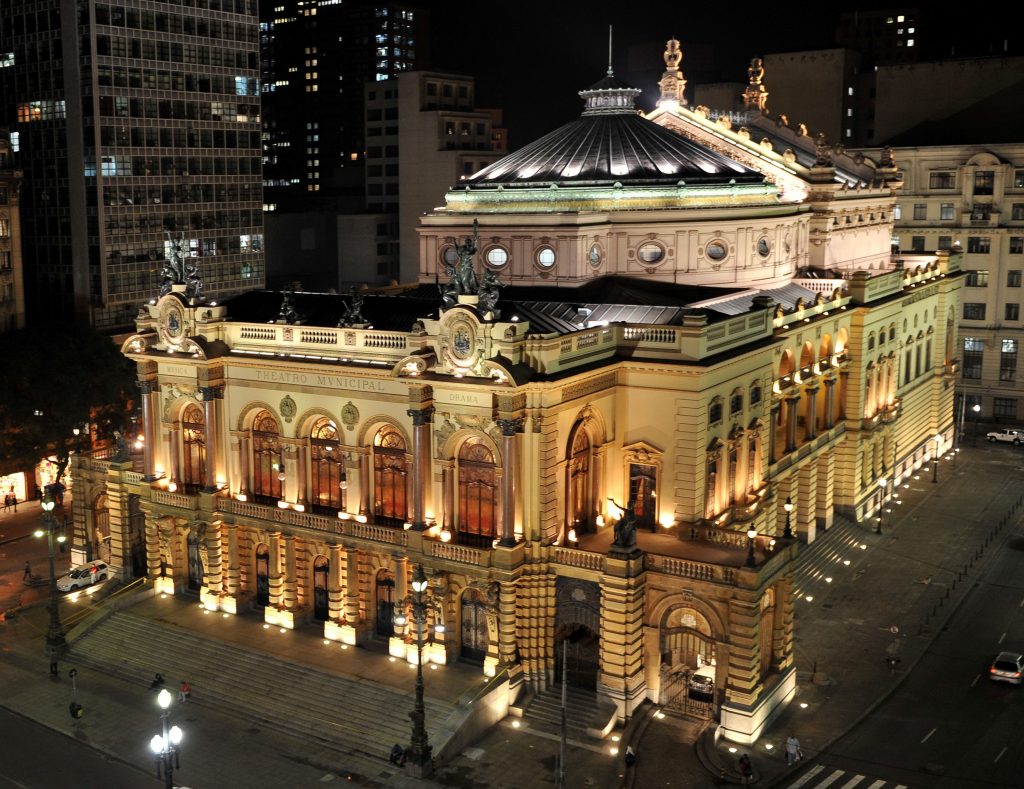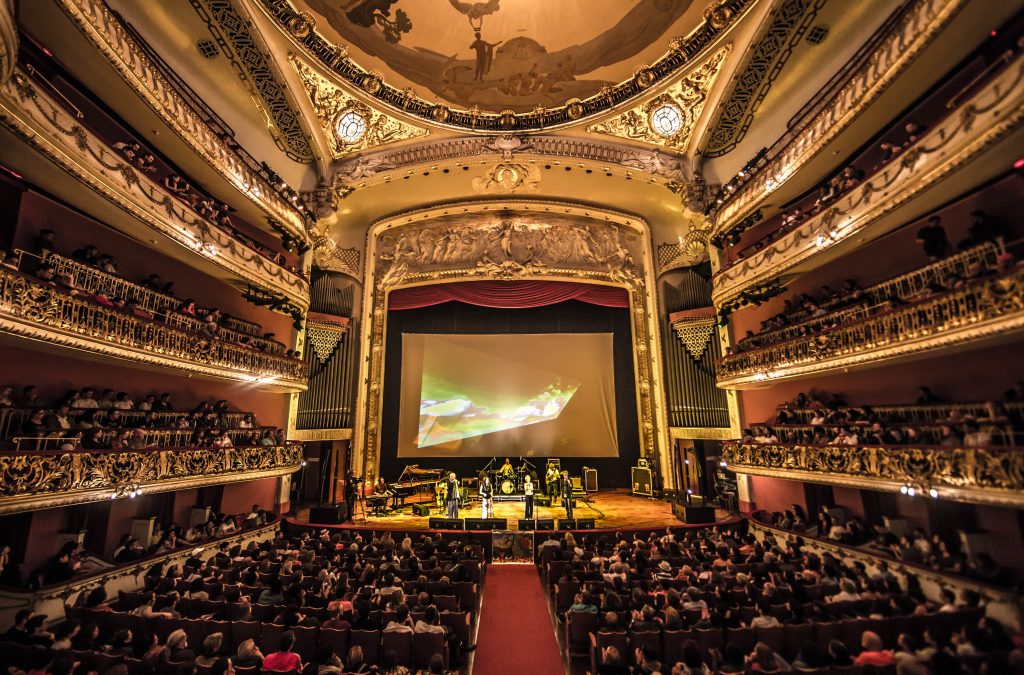Municipal Theatre of São Paulo (in Portuguese Theatro Municipal) is regarded as one of the landmarks of the city, significant both for its architectural value as well as for its historical importance, having been the venue for the Week of Modern Art in 1922, which revolutionized the arts in Brazil. The building now houses the São Paulo Municipal Symphonic Orchestra, the Coral Lírico (Lyric Choir) and the City Ballet of São Paulo.
The idea of building a representative theatre for the city of São Paulo was inspired by its increasing importance on the international stage. From the beginning of 20th century it was inhabited by the Brazilian bourgeoisie, of which a great part was involved in the business of coffee farming. The city had also quite a large Italian population. So far, the city could rely only on the Teatro São Bento, which after a fire was no longer suitable for large foreign productions. That is why the paulistana aristocracy demanded a creation of a new theatre, with a structure similar to some of the best theatres in the world and suitable for staging large opera productions.

The place which was chosen for the construction was Morro do Cha’, or Tea Hill, which had been the site of the new Teatro São José. Ramos de Azevedo was the engineer assigned to the construction. He was also helped by two Italian architects Cláudio Rossi and Domiziano Rossi. In 1903, construction began, and São Paulo gained one of the best venues in the world for the presentation of theatre productions, mainly operas. As it was customary in those days, the majority of the materials was imported from Europe, and the architectural reference was Palais Garnier of Paris.
The construction lasted about 8 years. The first staged production was the opera Hamlet by Ambroise Thomas. The initial idea was to present an opera Il Guarany, but the company, directed by an Italian Titta Ruffo, a celebrated baritone voice of the time, did not want to count on putting works by Brazilian composers in its repertoire. Also other problems had happened before the opening night. The stage decorations had not arrived in Brazil in time which caused the postponement of the opening date. When the new date arrived on 12 September 1911, the result surpassed all the expectations of the public and the city’s dominant class.
Where: Praça Ramos de Azevedo
When: Monday to Saturday, from 10 am to 7 pm. Previous online booking necessary for guided tours.
Getting There: 5 min walking from Metro Station Anhangabaú
For more information contact us!
Information from wikipedia









